convert-png-to-jpeg
convert to png
JPG vs JPEG: Understanding the Most Common Image File Format
Webmasters encounter images constantly. While you don't have to be an expert in image manipulation to edit images and upload them on websites, you should familiarize yourself with common file formats such as JPEG. Or is it JPG?
In this article, we'll discuss the JPG comparison with a JPEG presentation to help you better understand the differences, as as other details that will help you upload the best images you can on your website for the ultimate user experience. If you're seeking an in-depth tutorial on the current .webp format and how to use it, we've got that covered too.
Ready? Let's get started!
Table of Contents
- What is JPEG?
- What is JPG?
- JPG vs JPEG: Similarities Between the Two
- JPG vs JPEG 2000
- Convert Image Files to JPG: Common Methods
convert to jpeg
As a webmaster dealing with images, you've probably seen files in format JPEG in the past during your uploading and editing adventures.
But did you realize that the term JPEG can actually be a term used to refer to three distinct things?
This is the case and we're here to discuss all of them:
1. JPEG Lossy Compression
When you upload pictures to your website it is essential to take care not to adversely affect your site's speed and performance by using huge images that consume resources and take a long time for them to download on the frontend of your site. In fact, all website owners must optimize their images in some way so that they can reduce the file sizes of their images while preserving speed of loading and user experience.
That's the point where JPEG is useful. JPEG is a lossy compression method that is used to ensure that the digital images used are as tiny as is feasible and loaded quickly when you want to access them.
Here are a few things you should keep in mind regarding lossy compression:
- The file size of image that has been compressed is permanently reduced by eliminating any unnecessary ( redundant) informationfrom the image.
- The quality of images can be a problem even though the difference is often so slight the average site visitor can't tell.
- During the compression process, each pixel is compared to other pixels in a range of 2:1 into 100:1 ( any pixels that are similar to the original are then removed as they are thought to be unnecessary).
- JPEG lossy compression is commonly employed to create photographsand complex still images.
- When you compress an image by lossy compression methods, you are able to determine your file's size as well as the image picture quality. ( e.g., smaller files = worse image quality).
- As much editing and saving an image you edit and save, the less professional the image of the image will be.
If you're proficient in editing images with lossy compression, there's the chance that you could save the image's quality, while reducing the size of its file. You can do this using RAW JPEG images editing them, then saving the image only once.
convert to BMP
If you're not sure whether you want to implement JPEG lossy compression on the images you upload to your website there's an alternative: lossless compression.
Lossless compression will save your images in an entirely other format ( usually PNG). The image quality does not suffer because there is no information has been removed, keep in mind that with lossless compression the final dimension of your photo will be bigger than the one created by lossy compression. This can result in longer loading times on your page.
2. Joint Photographic Experts Group (JPEG)
JPEG is the acronym for Joint Photographic Experts Group, that's the name of the subcommittee that was instrumental in establishing the JPEG standard, as well as other standards for still image coding under the broader group called ISO.
The initial JPEG standard was established at the end of 1992 and was issued by ISO ( International Organization for Standardization). ISO will be responsible for creating documents to "...provide requirements either specifications, guidelines, or characteristics that can be applied consistently to guarantee that the materials, products, processes and services are suitable for purpose."
ISO defines the standards for various things including digital imagery, in an effort to provide consumers and customers with most superior products and services. 
Image source: Wikimedia Commons
This is an international unofficial group of people that has members from over 164 countries, making it the largest worldwide developer of standards.
3. JPEG as a File Format
The third way JPEG is used when referencing a file format name or as a method of storing files from digital cameras. This is probably how you're used to seeing JPEG because it's one of the file format alternatives you can use to take a picture after making changes to it. 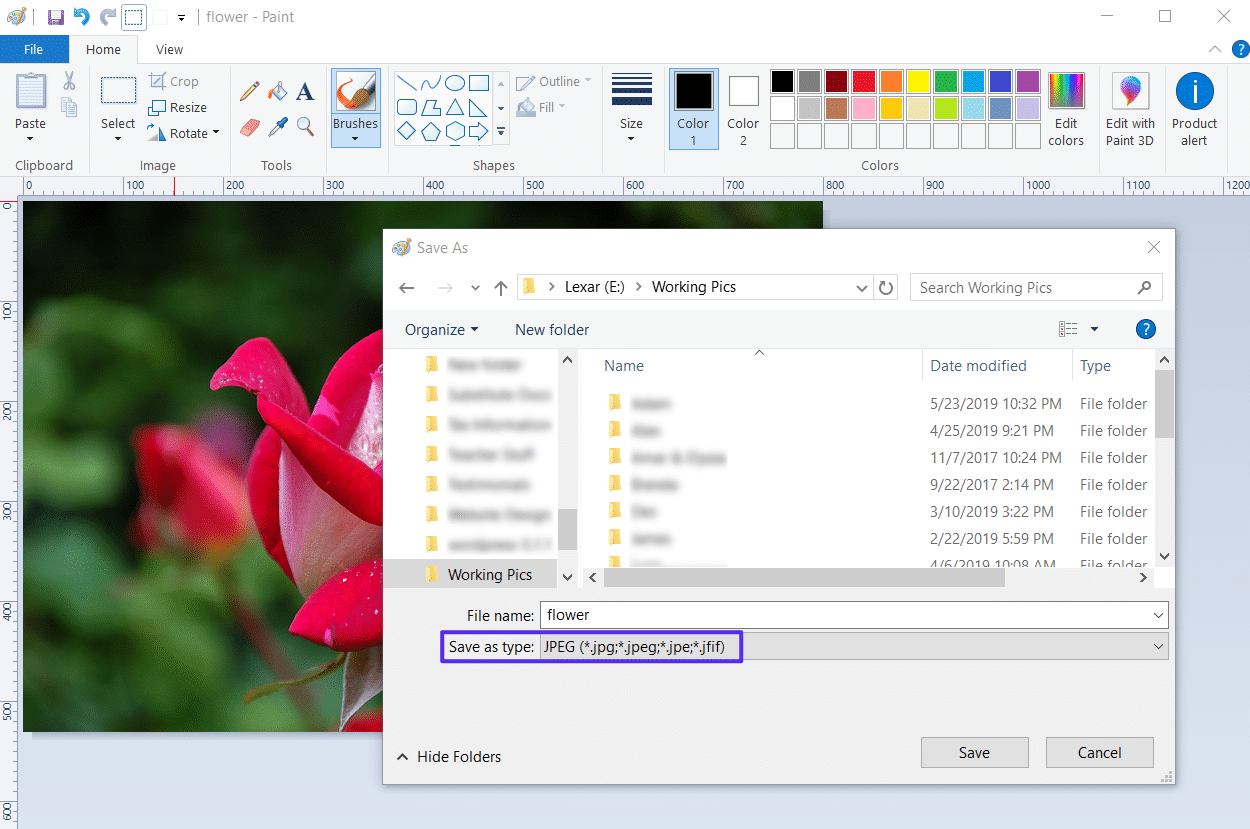
JPEG file format
Here are some fun facts about JPEG file format .jpeg document format.
- Most commonly used image file that is used with digital cameras and other devices to capture images.
- Supports 16,777,216 colors, which can be created using 8 bits of each RGB shade model.
- It can display more than 16 million colors simultaneously which makes the colors and the contrast resolution nearly perfect.
- Supports a maximum size of 65,535 pixels x 65,535 pixels.
- This reduces the dimension of an image by approximately 50-75% ( because of lossy compression) when the image is saved
Also, this file format is not ideal for images with sharp edges since the colors blend more than if the image was saved as a .png or.jpg, which show each individual pixel as a mix.
So, let's find out what JPG is.
What is JPG?
What exactly is JPG as compared the other formats, JPG and JPEG? 
Extensions for files in Windows
If you're looking for a way to compare to .jpeg in comparison to .jpg it is the fact that there is no difference between the twoexcept the number of characters.
Crazy right? Let us explain.
The term JPG has been used since the early version of Windows operating systems. Specifically, the MS DOS 8.3 and the FAT-16 systems had a limit of 3 letters when it came to names of files, unlike more UNIX-like operating systems, like Mac or Linux and Linux, which didn't have the same limit.
Therefore, on Mac or Linux systems Images saved as JPEGs were saved with the extension .jpeg. However, when saving the same kind of images for Windows The file extension had to be cut to .jpg to make sure it didn't exceed the limit of 3 letters.
Nowadays, Windows operating systems accept files with 3- or 4-letter extensions, such as .jpeg or .jpg. Since a large number of users have been using Windows for so long, and are used to saving their images as JPGs, they haven't stopped. As a result, photo editing software such as Adobe Photoshop and GIMP save all JPEG images by default to the .jpg extension on as well Windows or Macs to prevent confusion.
JPG vs JPEG: Similarities Between the Two
You're aware the fact that .jpeg and .jpg files are basically the exact thing. To drive that point home, and make sure you remember it into the future, let's look at the similarities of JPEG and JPG images.
1. Both Are Raster Images (Not Vector Images)
Computer images can be produced either as vector or raster pictures. As JPEGs are vector images, so are JPGs.
Raster graphics are bitmaps made up of images. A bitmap is simply a grid of individual pixels which when combined create an entire image. In other words, raster photos are made up of tiny squares ( or pixels) of color that are all coded in a certain shade or hue. They taken together form an image that is easy to study. 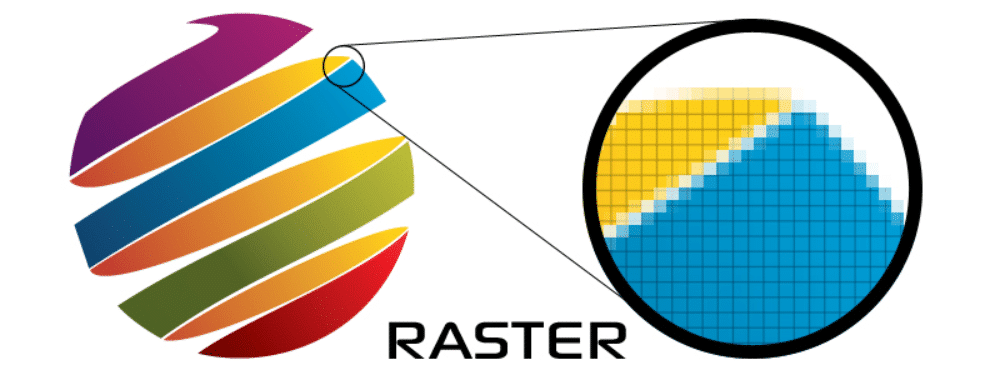
Image source: PrintCNX
Here's more information on raster images that will make it easier to understand:
- Ideal for images that are not lined like photographs or scans of artwork or detailed graphics.
- They exhibit subtle hues or shade gradations and very undefined lines and designs.
- Because of their Pixel-based nature they suffer quality issues when blown in dimensions ( they become jagged and expose individual pixels).
- They are defined as being displayed at a single resolution. The resolution is calculated in dots per inches ( dpi).
- The higher the dpiis, the higher resolution and greater aesthetic appeal of the image.
- Common raster file formats include: TIFF, JPEG, GIF, PCX and BMP files.
- Images in the Raster format constitute considered to be the Web standard, meaning that they are preferred for all images you can find on the internet.
As previously stated, JPEGs and even JPGs are not vector images. 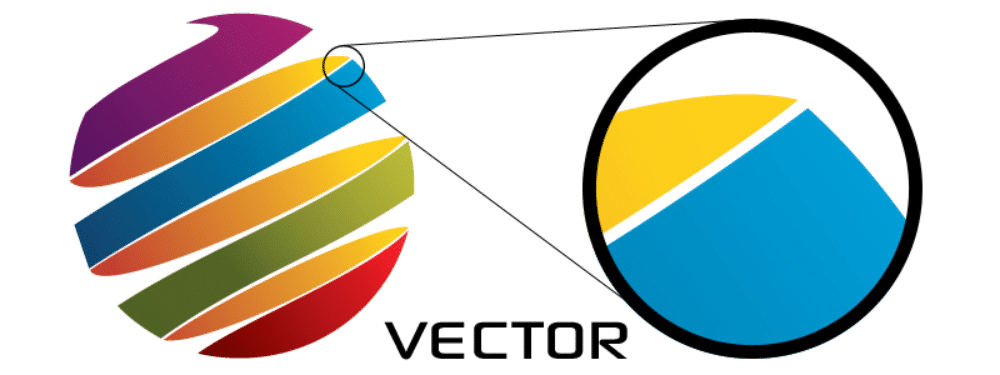
Image source: PrintCNX
Here's some information about vector images so it is easier to understand the distinction:
convert-to tiff
Do you want to know how we increased traffic at a rate of 1000%?
Join over 20,000 others to receive our weekly newsletter containing insider WordPress information! Subscribe Now!
- Images are based on mathematical formulas that define geometrical shapes such as polygons, lines curvatures, circles and rectangles.
- Perfect for straight-edged pictures like line art.
- Since there aren't any color gradations, they work well for flat photos that have uniform colors.
- Use popular images such as logos, letterhead, and fonts.
- You can scale down or up without any loss in quality as they don't depend on pixels to make the image complete.
2. Both Terms Mean the Same Thing
Did you remember when we talked about the term JPEG and how it stood as the Joint Photographic Experts Group? Yes, you read it that JPEG and JPEG and JPG are abbreviations of that same ISO sub-committee.
3. Both Are Used for the Same Image Types
Because they are raster image and not vectors, they both .jpeg and .jpg file formats are best used to create digital photographs. Digital photographs feature a range of color variations that appear seamless when saved as raster JPEG/JPG images. This means your site visitors will always see a beautiful photograph when saved as a .jpeg/.jpg and uploaded to your website.
Learn more about image file types and the impact they have on your site.
4. Both Lose Some Quality When Saved
Since the .jpeg comparison is null, and the.jpeg .jpg comparison is not valid ( because they are the same exact thing) So it is natural that the compression algorithm used in each file format -lossy compression results in a reduction in image quality as the file size of the image decreases.
This means that no matter which extension you choose to use ( either .jpeg or .jpg), your image's file size will be smaller than it was originally and result in faster loading times when uploaded on your website and users visit your site.
In the final analysis, JPEGand JPGs are identical and have a number of main uses in order to reduce the file size of images for better web browsing and offer users a simple way to compress their images on saving. They can also name the file using a common file extension that is recognized by many.
So ask yourself: JPG vs JPEG Which one is better? From there, don't think too hard because the answer is neither. They're both the same. the choice of which you decide to use is just a matter preference.
JPG vs JPEG 2000
If you've been trying to find information concerning JPEGs and other JPGs then you've likely come across the term JPEG 2000and thought about what in the world this was. The truth is, it's not an option available in the majority of editors for images.
JPEG 2000 was an image encoder developed by the Joint Photographic Experts Group in 2000. The JPEG 2000 standard was designed to be superior to the JPEG standard already in place. In reality, it was made to implement lossless compression for Images by using the most advanced compression techniques on a discrete wavelength transformation.
If you're putting up a lot of photos and images to your site, you don't need to load pages that are slow to visitors, aren't you? Our servers are lightning fast and 24/7 expert assistance with WordPress experts. Find out more about our plans
It provided people with a method to improve their image quality and save them in JPEGs, without degrading the quality of the image.
Here are some of the key features of JPEG 2000:
- The latest Compression Strategies:unlike other traditional JPEGs, JPEG 2000 could do lossy as well as lossless compression ( even on a single image file).
- Progressive Decodingenables site visitors to see smaller quality versions of an image, while the entire process is running within the background. As more data is downloaded, the quality of images improves for the user.
- Higher Compression Ratios:when it involves lossy compression JPEG 2000 will compress an image up to 20-200 percent more than JPEG while maintaining the same image quality compared to an JPEG image with the same dimensions.
Furthermore, JPEG 2000:
- Allows for preservation of transparency in images.
- It can describe grayscale, bi-level pallet-color, full-color image information.
- Unlimited amounts of private or special-purpose information in metadata.
- Larger image sizes can be handled ( greater than 64K pixels), with no tilting.
- Ultra-low latency, which is especially useful for live TV content.
- Scalability, both in resolution and quality.
JPEG 2000 Limitations
While JPEG 2000 contains a number of wonderful features and may be the next-best quality digital image coder but there are many reasons it's not yet an ideal file format for many people:
- No all-purpose browsers support ( only supports Safari).
- Non-compatibility not compatible with JPEG ( must encode using a new standard) and supports the original JPEG).
- The process of encoding JPEG 2000 files can be CPU intensive, which can stress servers and cause them to slow down.
- Numerous cameras and websites aren't ready for the format , because it's still not universally accepted.
Due to its limitations you'll struggle to find that JPEG 2000 file format as an option when saving your digital images. And while it is arguably superior to JPEG, until it is universally accepted that you'll probably run into a host of compatibility issues which will make your work harder as a webmaster than it has to be.
Convert Image Files to JPG: Common Methods
There are many options of saving your digital pictures as .jpg or .jpeg files. Let's take a look at a few.
1. Windows Paint
If you have Windows, you can easily save any image in .jpeg or .jpg with the help of Windows Paint. Upload your image into Windows Paint, go to Fileand then Save as Select the destination file, name your image, then select JPEG (*.jpg, *.jpeg, *.jpe, *.jfif)from the dropdown options. 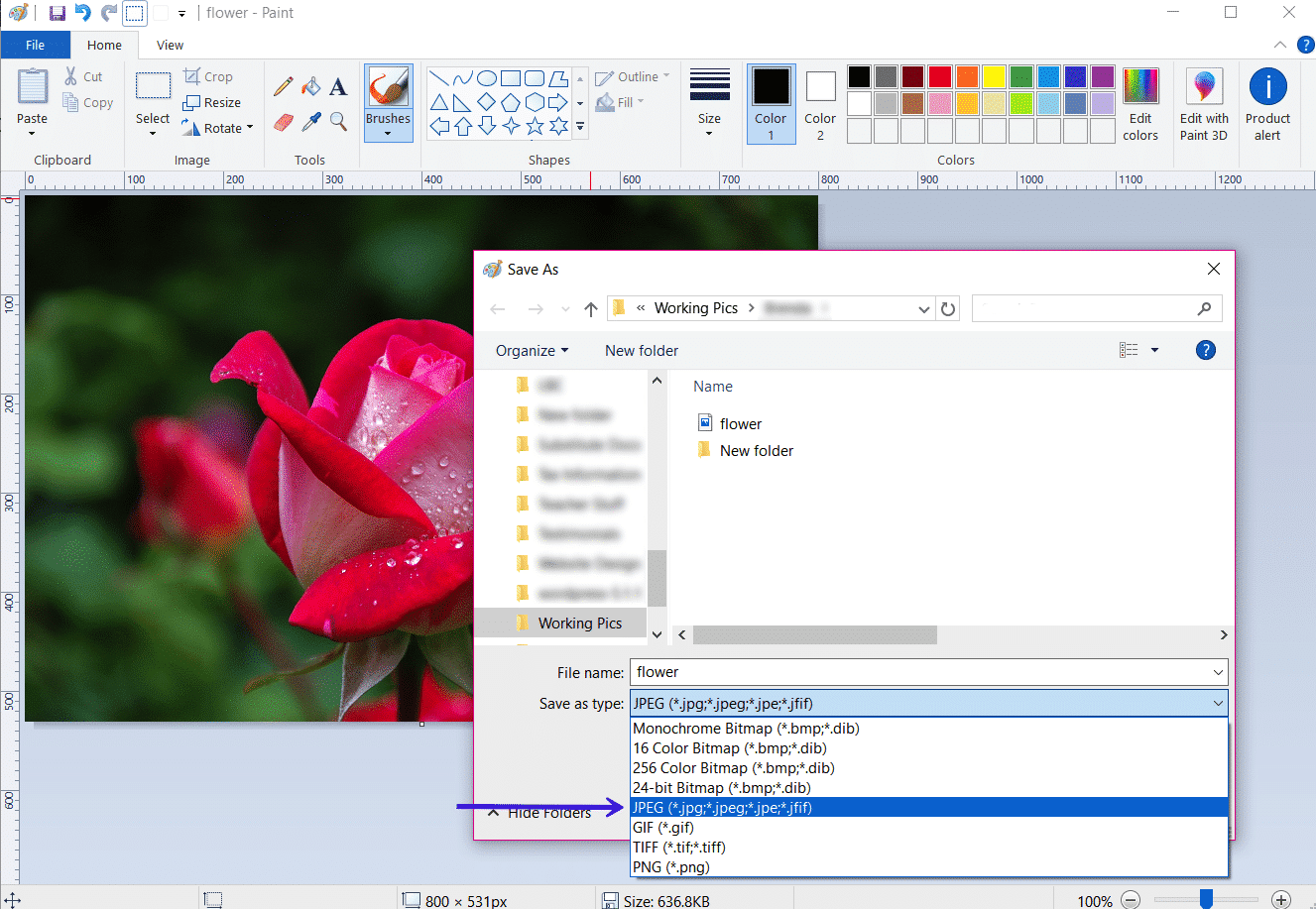
Windows Paint
Click "Save.
2. Affinity Designer
Affinity Designer is comparable to other image editing programs such Adobe Photoshop. To save images as JPG, you must first save it as JPG using a software like this, you must first open the application and uploading your image. Make any changes you wish to make and then click the Fileto Export.... Then, select from the JPEG icon, choose your preferred quality ( best, high medium, low, or high), and select Export. 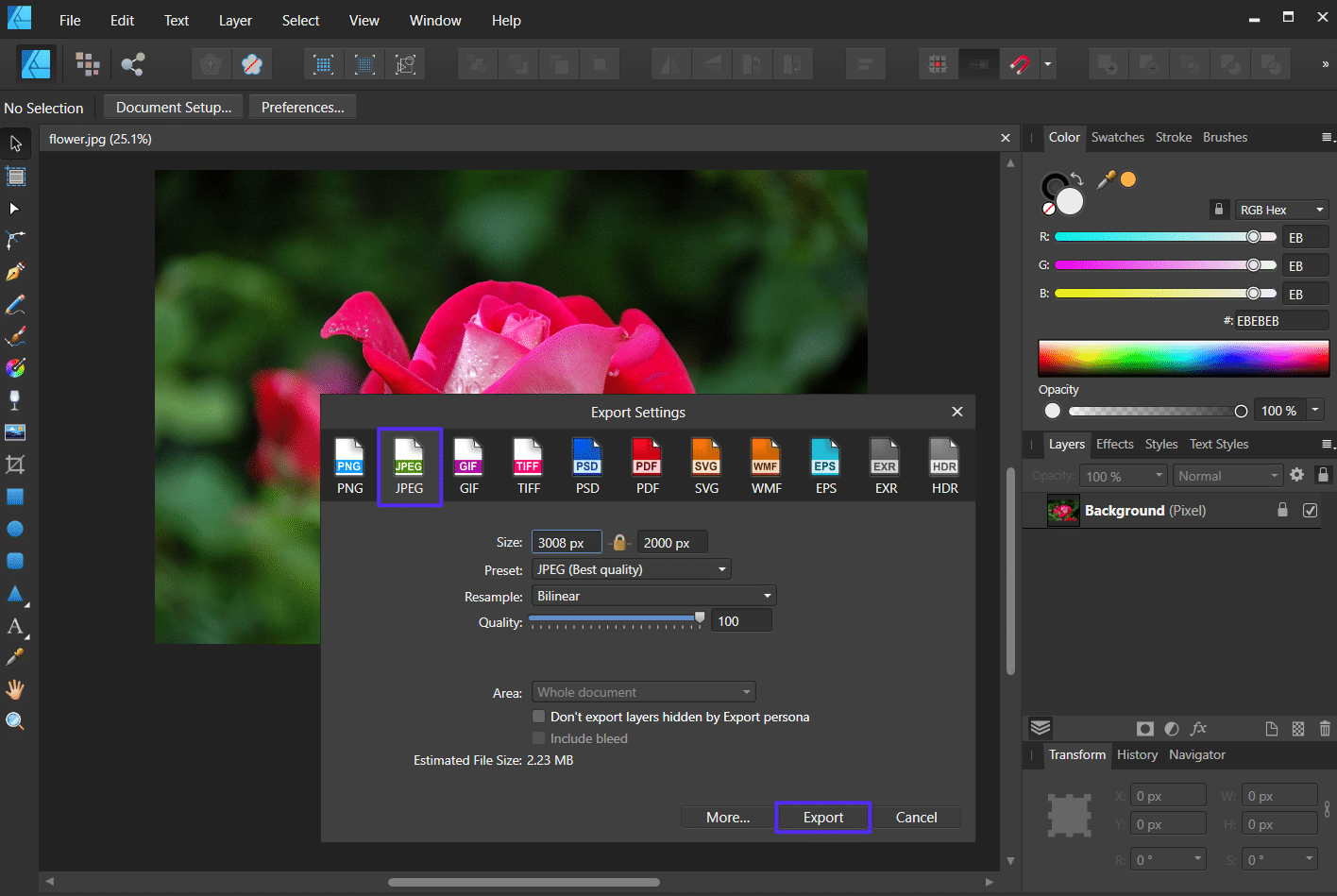
Affinity Designer
When you do choose to save the file, after that, the Save As dialog will open and you can choose a file location, name the image, and again ensure that you are saving the file as JPG. 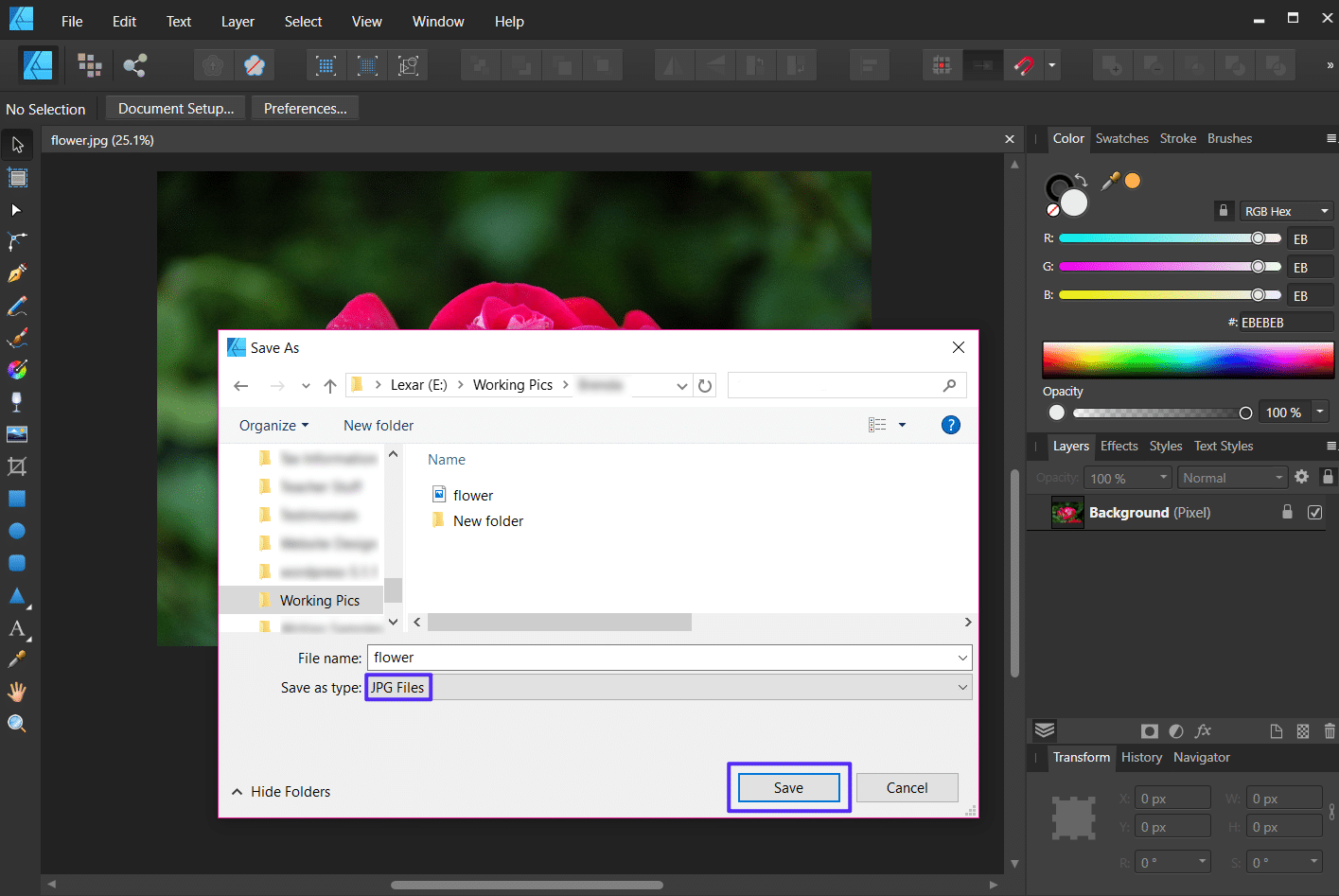
"Save as" in Affinity Designer
Click Save.
3. Online Converter Tool
If you're trying to convert images to JPG There are a variety of free online jpg converter tools to help. For example, FileZigZag is a free online file converter that's easy to use. Simply drag and drop an image file to upload it and choose the file type to convert it into you, then type in your email address, then click Convert. 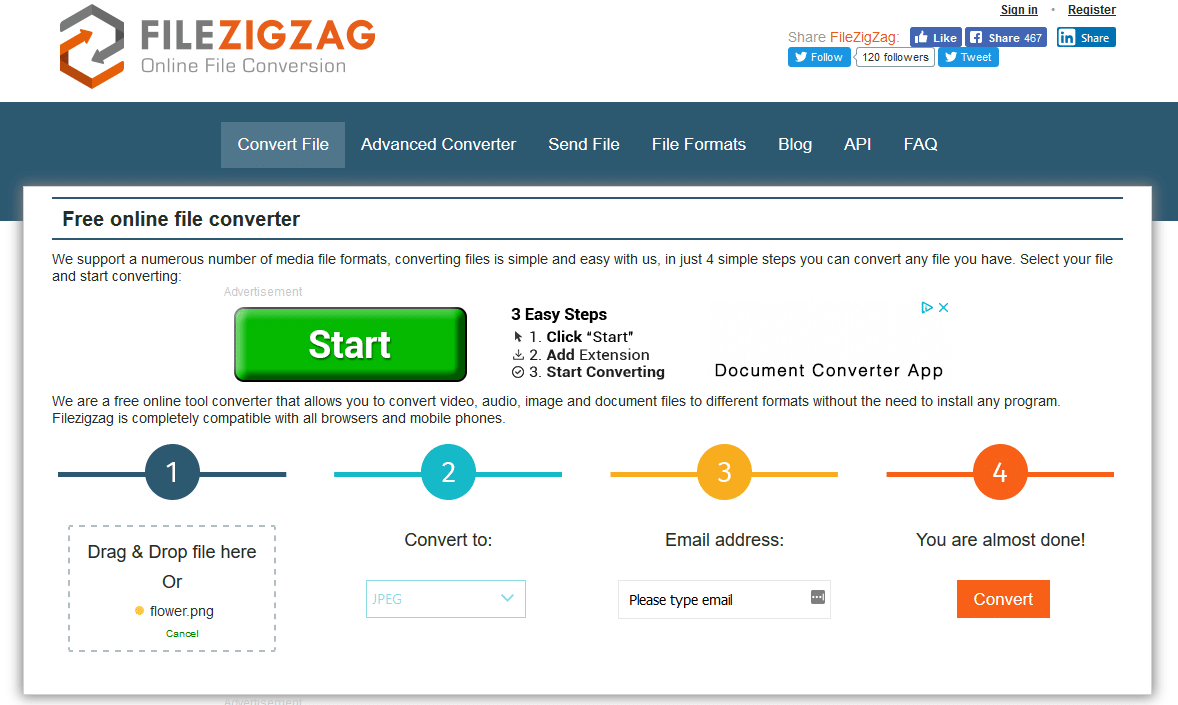
Convert png files to jpeg FileZigZag
Of course, you might not want to hand over your email to us in exchange for converting your image into a JPG. That's the reason we've gathered additional free and premium solutions that you can check out:
- XnConvert : perfect for advanced editors who require lots of image files formats, and the capability to convert bulk, and work with Windows, Mac, or Linux.
- Zamzar :a free online tool designed for users with big photographs ( up to 50MB) who wish to have the option of having the final output emailed or not.
- The adapter : a simple image converter that works with batch images, and instantly converts and runs on both macOS as well as Windows.
Of of course, these are only one of the options you have if you would like to convert images to JPG.JPG is not the same as JPEG What's the difference? What's with JPEG 2000? Find out (and more) with our extensive guide! CLICK TO TWEET
Summary
JPG Vs JPEG are the most commonly used formats and methods of compression for those wanting to store as well as save their digital photos. This is especially relevant for webmasters that wish to display attractive images and provide a superior user experience.
There's good news for you: no which one you prefer .jpeg, .jpg or .webp file formats, you're likely have the same result: beautiful images that load blazing fast for site users.
Lower costs, time and maximize the performance of your site with:
- Assistance is immediate Instant assistance from WordPress hosting experts, available 24/7.
- Cloudflare Enterprise integration.
- Global reach for the public with 28 data centers around the world.
- Optimization through an integrated Application Optimization with our built-in Application.
All of that and much more, in one plan with no long-term contracts, assisted migrations, and a 30-day-money-back-guarantee. Take a look at our plans or consult sales for the plan that's right for you.
use this tool >> compress images
Comments
Post a Comment